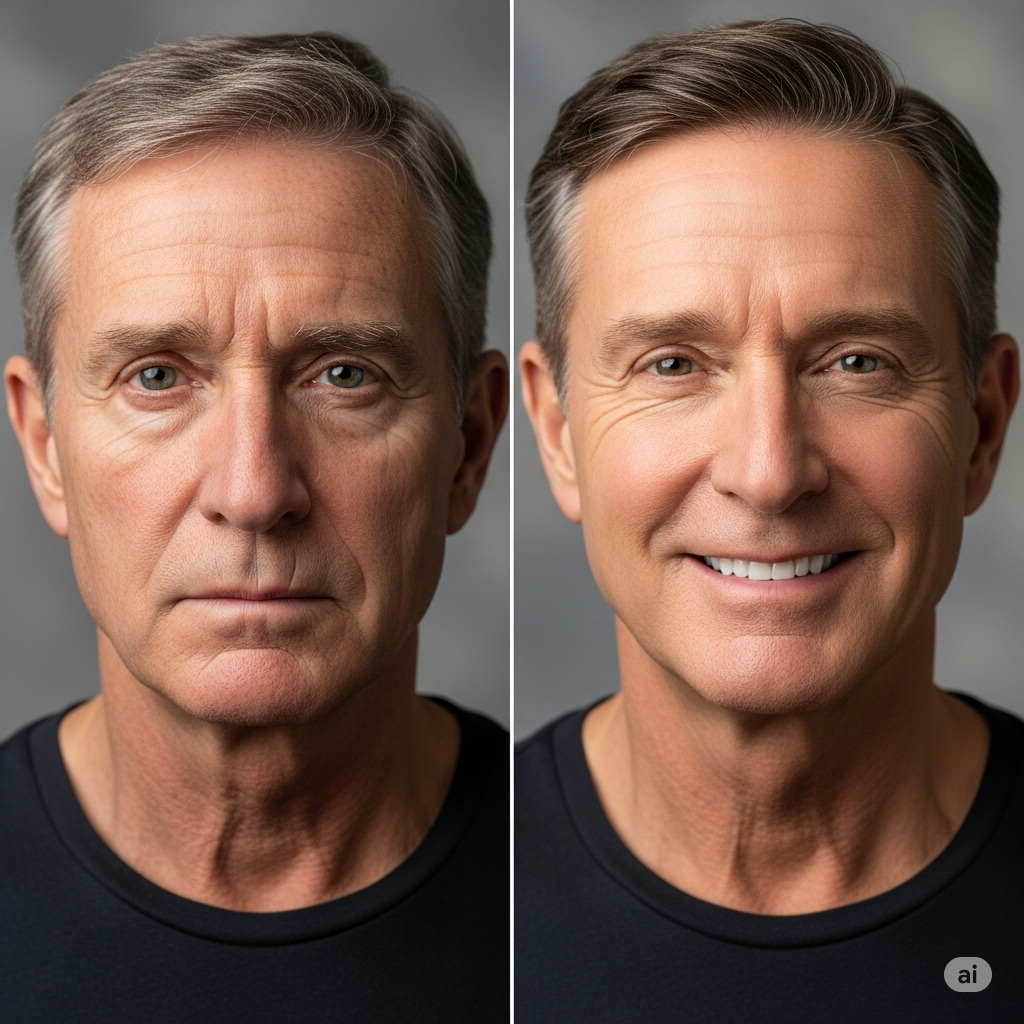The facelift before and after transformation is one of the most sought-after results in cosmetic surgery, offering a powerful way to turn back the clock on visible signs of aging. For many, seeing the dramatic yet natural-looking changes in photos is the first step toward considering the procedure. But what really happens between these two pictures? A successful facelift is more than just a procedure; it’s a carefully planned journey toward a refreshed, more youthful version of yourself. This comprehensive guide will walk you through what to expect, from the initial consultation to your final, stunning results.

What Can You Truly Expect From Facelift Results?
A common misconception is that a facelift will make you look like a completely different person. The goal of a modern facelift, however, is rejuvenation, not alteration. A skilled, board-certified plastic surgeon aims to restore your natural youthful contours, making you look well-rested and vibrant. The focus is on reversing the effects of gravity and time in a way that is subtle and elegant.
Specifically, a facelift effectively addresses several key areas of facial aging. Patients often see significant improvements in:
Sagging in the Mid-Face: Restoring volume and lift to the cheek area.
Deep Creases Below the Lower Eyelids: Smoothing the transition from eye to cheek.
Nasolabial Folds: Softening the deep lines that run from the nose to the corners of the mouth.
Jowling: Eliminating the loose skin that hangs along the jawline.
A “Turkey Neck”: Correcting loose skin and excess fatty deposits under the chin and on the neck.
How Do I Know if a Facelift is Right for Me?
Deciding to undergo a facelift is a deeply personal choice. While looking at before-and-after photos can be inspiring, understanding if you are a suitable candidate is the most critical step. This involves evaluating both your physical signs of aging and your overall health.
What are the common signs you might be a candidate?
You might be a good candidate for a facelift if you are bothered by one or more of the following concerns: you’ve lost the sharp, youthful definition along your jawline due to jowls; you have significant sagging skin and wrinkles on your neck; the skin on your cheeks has begun to droop, creating a tired or hollow appearance; or you feel that your facial appearance doesn’t reflect your inner energy and vitality. It’s less about a specific age and more about the degree of skin laxity.
What Are the Different Types of Facelifts?
The term “facelift” can be confusing because it doesn’t refer to a single, one-size-fits-all procedure. The technique your surgeon recommends will depend on your unique facial anatomy and aesthetic goals. Understanding the options can help you have a more productive facelift consultation.
The Full (Traditional) Facelift
This is the most comprehensive option, designed to address moderate to advanced aging throughout the mid-face and neck. The incisions are typically made within the hairline, around the ear, and extending to the lower scalp. A traditional facelift allows the surgeon to reposition deeper facial tissues, remove excess skin, and redrape the remaining skin for a smoother, more youthful contour.
The Mini Facelift
Ideal for patients with early to moderate signs of aging, the mini facelift uses shorter incisions, usually just around the ear. It primarily targets sagging jowls and loose skin in the lower face. Because it is less invasive, the facelift recovery time is often shorter compared to a full facelift.
What Does the Facelift Recovery Process Involve?
Your “after” photo is the end result, but the recovery period is a crucial part of the journey. Being prepared for the healing process is key to a smooth and successful outcome. While every patient heals differently, a general timeline can help set realistic expectations.
The First Week After Surgery
This is the most intensive phase of recovery. You can expect swelling, bruising, and some discomfort, which can be managed with prescribed medication. Rest is paramount. Your head will need to be elevated, and you will have follow-up appointments to monitor your healing and remove any drains or sutures. Following your surgeon’s post-operative instructions is essential.
Weeks 2-4: Returning to Normalcy
During this period, swelling and bruising will significantly subside. Most patients feel well enough to return to work and light daily activities within about two weeks, though strenuous exercise should still be avoided. You’ll begin to see the initial improvements in your facial contours, although some residual swelling will still be present.
How Do I Ensure the Best Facelift Before and After Results?
Achieving a beautiful and natural-looking outcome depends heavily on careful planning and selecting the right professional. Your role in the process is just as important as the surgeon’s.
The consultation is your opportunity to ensure you’re in expert hands. Always choose a plastic surgeon who is board-certified and has extensive experience in facial rejuvenation. During your meeting, be prepared to discuss your goals, review the surgeon’s portfolio of facelift before and after photos, and ask questions. This partnership is built on trust and a shared aesthetic vision. A clear communication is a key predictor of patient satisfaction.



